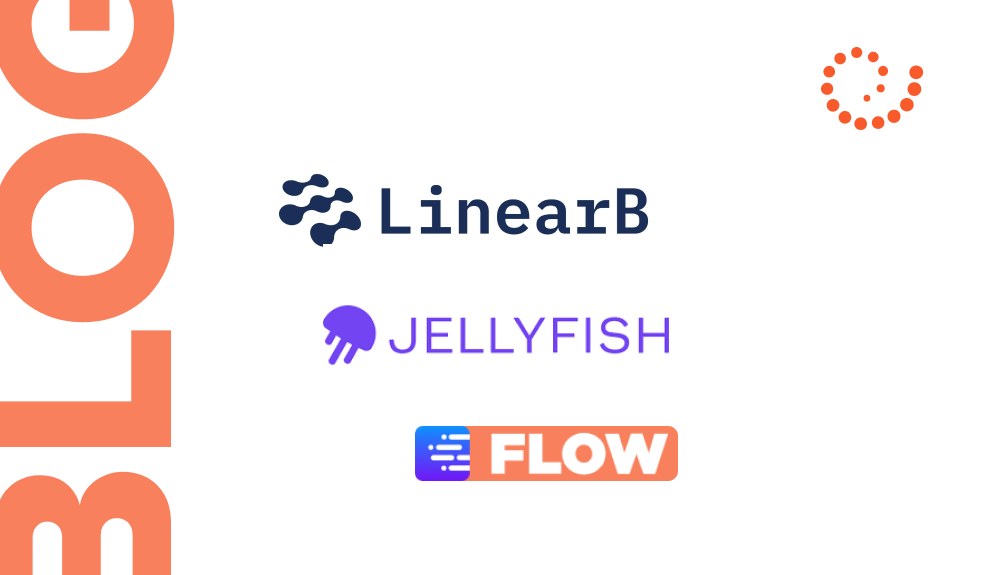![Exceptional_Programming_Languages_for_Artificial_Intelligence_Integration[1]](https://setronica.com/wp-content/uploads/2024/02/Exceptional_Programming_Languages_for_Artificial_Intelligence_Integration1.jpg)
5 Exceptional Programming Languages for Artificial Intelligence Integration
Kristijan Pušić | February 16th, 2024
Choose Rust for enterprise innovation, TypeScript for web projects, Golang for backend efficiency, Python for AI dominance, and Java for enterprise integration.

Boost IT Team Performance: Key Software & Metrics for CTOs and CEOs
Kristijan Pušić | February 15th, 2024
Imagine it’s Monday morning, and as a CTO, you’re starting your week reviewing the progress of your development teams.

Mentors in IT: Formulas for Successful Tandems
Alla Dortman | February 13th, 2024
A company’s success in the IT market depends to a large extent on its ability to respond quickly to changing requests and to develop trend-setting skills internally, as it becomes very expensive to buy them externally.

IT Company Good SLACK Practices. How to Folster Solid Roots for a Healthy Working Environment
Kristijan Pušić | February 4th, 2024
SLACK is definitely a widely used communication solution in IT companies, yet it has that extra charm and yet it is not intrusive into the day-to-day life of engineering teams.

Building Strong Foundations: Mentorship in Early Career Development
Kristijan Pušić | January 30th, 2024
How do you explain to a mid-level developer that he is not yet a senior developer? What is the next thing for a junior developer to learn on the way to becoming a mid-level developer? How quickly can I become a senior developer? Developers at different levels have different questions at different times in their careers.

What If Someone at Work Asks You About Your Weaknesses?
Alla Dortman | January 25th, 2024
Hello, I’m Alla Dortman, an HRD professional with a background as a Recruiter, Team Leader, and HR Business Partner. Grounded in my belief in understanding business processes, I’ve gained insights over the years that extend beyond HR, benefiting anyone interested in effective collaboration. Today, I want to share the motivation behind starting this blog—primarily, to share practical knowledge gained from solving unique HR challenges. My aim is to assist HR professionals and managers grappling with similar situations, contributing to the growth of the HR profession. Lastly, I aim to inspire and motivate others in the HR community, acknowledging hurdles, emotional stress, and the need for innovative solutions in HR. On my HRD blog, I’ll delve into various HR aspects, spanning talent management, corporate culture, and leadership development. Anticipate personal success stories, lessons learned, and a platform for open dialogue catering to professionals at all levels of development and HR affiliation. Now, let’s explore the art of addressing weaknesses in interviews, drawing from personal experiences and providing empowering advice for turning vulnerabilities into triumphs. Step 1: Choose Relevant Weaknesses Identifying role-relevant weaknesses is paramount. A project manager walked into a job interview with a perfect resume. Everything in it was flawless: results, accomplishments, and certifications. When I asked him about his weaknesses, he admitted having trouble delegating tasks, finding it easier to do them than to explain. This puzzled me because effective delegation is crucial for leadership. I suggest discussing a relevant weakness: project managers often face decisions under uncertainty. Demonstrate your commitment to improvement with examples of how you’ve learned to analyze risks and make informed decisions. Step 2: Provide Examples and Actions In the second step, provide clear examples and strategies that demonstrate your recognition and improvement of weaknesses. Aim for honesty and positivity, turning weaknesses into strengths or opportunities. Cold calling, for instance, can be stressful. I recall the difficulty in writing letters to strangers early in my career. Yet, through practice, learning from mistakes, and a passion for communication, I transformed this weakness into confidently asking anyone a professional question. Step 3: Highlight Results and Benefits Emphasize the positive results and benefits of addressing your weaknesses. Aim for a confident, grounded, and factual tone illustrating the added value or impact of your personal growth. For example, in a marketing role application, you might mention evolving from uncertainty in using social media to mastering it by analyzing trends, interpreting data, and creating compelling content. This growth in expertise is a common experience for anyone striving to understand and confidently navigate specific tools. Step 4: Express Enthusiasm and Willingness In the fourth step, convey your eagerness and commitment to improving yourself and learning new skills. Aim for a curious, driven, and forward-thinking demeanor that demonstrates how you’ve embraced and thrived on challenges for personal growth. For example, as a prospective leader, discuss how you moved from initial hesitation to excitement about new technology. Embrace this change by exploring new tools, attending workshops, and sharing knowledge. We had just such a situation when a developer, after being promoted to Tech Lead, looked at new technologies from a different angle. When your job involves explaining something new to others, understanding it better becomes essential. Step 5: Avoid Common Pitfalls In the fifth step, it’s important to avoid common mistakes that can undermine your answer and the impression you make. Avoid claiming you have no weaknesses, too many to count, or disguising strengths as weaknesses. Such clichéd, insincere, or boastful responses can reflect poorly on your professionalism, preparation, or credibility. Similarly, refrain from mentioning weaknesses that are irrelevant, overly personal, or controversial. These off-topic, distracting, or provocative responses can make you appear unfit, unprofessional, or inappropriate for the role. Step 6: Practice and Refine The final step is to carefully prepare and refine your answer. Avoid completely improvising or memorizing, as this can come across as unprepared or inauthentic. Rather, aim to tailor and practice your response to ensure a confident, natural, and effective delivery that presents you as genuine, well-prepared, and persuasive. You don’t need to memorize your answers; it will sound unnatural. I once had a very strange interview where a candidate tried to use ChatGPT to answer questions. It didn’t work for him because when you wait for a machine to answer, you lose confidence in yourself that your own thoughts are as good as anything. No one is perfect, and you are not expected to be perfect in an interview, but answering a question about your professional weaknesses can show your self-awareness, your ability to draw conclusions and critically evaluate yourself, which is very valuable in any professional environment. Thanks for reading, see you in the next post. Related posts Join Our Team

PunchOut Integrations in eProcurement and the B2B Marketplace Advantage
Alexandr Orlenko | January 24th, 2024
Getting Started Efficiently managing catalogs and seamlessly integrating them with disparate systems is a critical aspect of modern business operations. PunchOut integration provides a solution for bridging the gap between catalogs and systems, streamlining processes, and improving operational efficiency. In this article, we’ll explore the functionality of PunchOut, examine both its positive and negative aspects, and then delve into the exciting new opportunities that come with integrating it into B2B marketplaces. Exploring the Concept and Functionality of PunchOut PunchOut is a data exchange mechanism that allows catalogs to be shared and accessed by external systems in a standardized and controlled manner. It enables real-time synchronization of catalog data, ensuring consistency across different platforms. Positive and Negative Aspects of Including PunchOut Integrations Positive aspects: Negatives: New Opportunity With Connection to B2B Marketplace Personally, the challenges associated with PunchOut, including complex implementation and potential user resistance, weigh heavily. However, it’s important to recognize that this functionality was a remarkable technical decision at its inception, and laid the groundwork for advancements in eProcurement. So I would like to look at the new opportunities that emerge as we dive into the B2B marketplace world. This integration addresses the challenges associated with punch-out by providing a central hub for streamlined procurement processes. Solving Complexity Through Marketplace Integration B2B marketplaces offer a simplified approach to procurement by acting as a centralized platform. This reduces implementation complexity and provides an easy-to-use interface for enterprises. Increased User Adoption The marketplace environment provides a single location for multiple sellers and a consistent, easy-to-use UX, as well as the ability to browse all goods from multiple sellers and find the best by comparing them. Expand Business Opportunities Integration with B2B marketplaces extends the reach of PunchOut. It opens doors to new business opportunities by connecting suppliers with a broader audience of potential buyers, fostering collaboration and growth. Summing Up In summary, the journey of PunchOut from a pioneering technical decision to a transformative force in eProcurement has been marked by both challenges and opportunities. While I may not be a fan due to the complexity involved, integration with B2B marketplaces is a compelling solution. By leveraging the strengths of PunchOut and the easy-to-use environment of B2B marketplaces, companies can improve efficiencies, streamline processes and open new avenues for collaboration. In the evolving eProcurement landscape, this integration represents a promising step forward and demonstrates the resilience of innovative solutions to adapt to the needs of businesses in the digital age. Explore Previous eProcurement Articles:

Navigating Challenges: Mentoring in the Ever-evolving Tech Landscape
Kristijan Pušić | January 24th, 2024
Discover the evolving tech mentoring landscape: AI impact, GenZ dynamics, and Setronica’s expertise. Stay ahead with modern mentoring in a changing IT world.

Mass Timber Construction Market: Research Summary
Info Setronica | December 20th, 2023
Delve into the evolving landscape of Mass Timber construction with our December 2024 market research.

Mentoring as a Service as a Modern Step up for Younger Developers
Kristijan Pušić | December 14th, 2023
This article is intended as a short guide to help you, the reader, understand the importance of mentoring and how it can benefit you as a software developer.
Recent Posts
- Rapid Hypothesis Testing for Driver Retention in Delivery Service
- How Setronica Created an AI Slack Bot, Part 3: Putting Our Bot to Work
- Building a Reliable Monthly Accrual Report: Overcoming Challenges and Implementing Solutions
- From Chaos to Clarity: Transforming Promo Code Management
- How to Scale a Delivery Platform to Market Leadership
